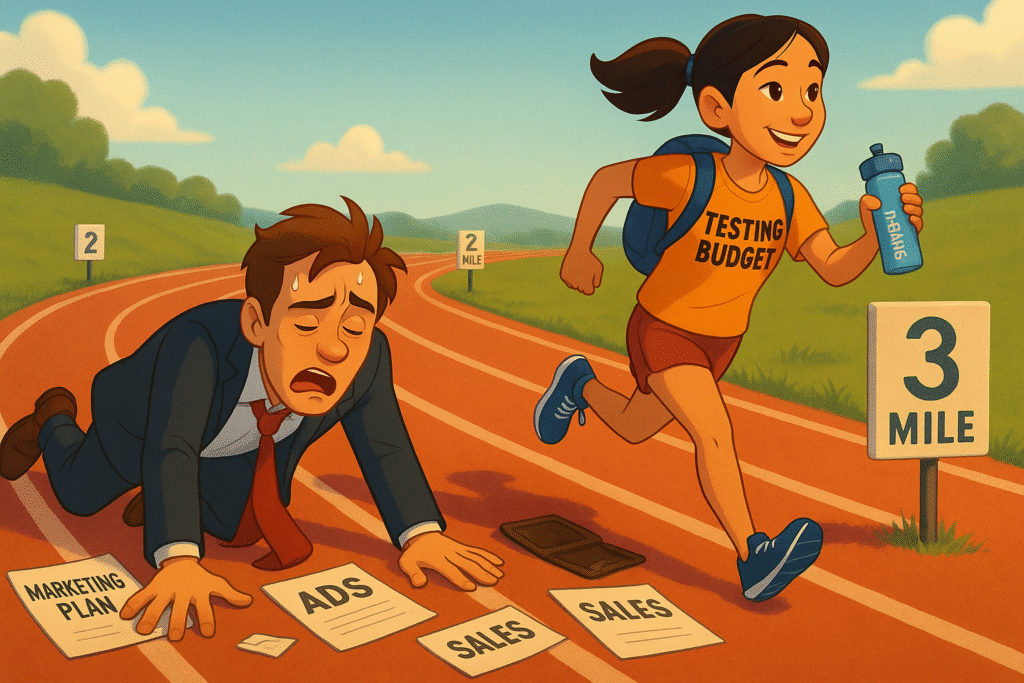
The tough truth about sustainable growth — and what happens when you run out of gas at mile 3
I constantly meet founders who’ve trained for a sprint but signed up for a marathon.
They’ve got a brilliant product, a killer launch plan, and enough budget for three months of fairly aggressive advertising (they think).
Then … reality hits.
Month one: Decent results, some promising metrics.
Month two: Performance plateaus, costs rise.
Month three: Budget depleted, conversion rates declining, founder panic shaking their world.
If you show up to product marketing trained for a sprint, you’ll never make it.
Marketing is never a race to immediate profitability. It’s almost always a methodical process of learning what works, iterating on what doesn’t, and gradually building momentum.
The brands that survive think like endurance athletes.
They pace their spending.
Plan for setbacks.
Budget for the learning curve.
I’ve seen brilliant products fade, not essentially because they lacked market demand, but mostly because their founders ran out of ideas before they ran out of money.
When you exhaust your testing pipeline, you’re done.
Sure, you might find more funding. But investors want to see you trending upward with evidence you’ve cracked the code.
The founders who get second rounds are seldom the ones with the biggest month-one numbers. They ARE the ones who can demonstrate systematic progress, learning from failures, and a clear path to profitability.
In I Need That, I explain how breakthrough products require patience to find product-market fit. Many quit right before their breakthrough moment.
They’ve burned through obvious audiences, grabbing low-hanging fruit.
They have tested predictable messages, and exhausted their initial hypotheses.
That’s when the real work begins.
Some of the most successful campaigns I’ve run started failing for months before they started succeeding.
We tested dozens of angles, audiences, and approaches before finding the combination that worked.
The difference between winners and losers:
Stamina and pacing.
Winners pace themselves. They set aside budget for learning, not only for converting.
They plan for six-month testing cycles, not six-week sprints.
They do what I wrote about recently: validate with 10 people before you bet the farm.
Your endurance training: Look at your current marketing timeline and budget.
Are you built for sustainable testing over 12-18 months, or are you planning to sprint until the money runs out?
If it’s the latter, scale back spending and extend your runway.
Better to test methodically than burn bright and crash.
Marathon winners pace themselves from step one.
What’s YOUR biggest lesson from treating marketing like a sprint instead of a marathon?
Tap that reply arrow and share your endurance marketing stories — the times patience paid off OR impatience cost you.
Or reach out to my team of product marketing strategists at Graphos Product.
